|
COMMON lINEAR sYMBOLOGIES
|
|
Name
|
Use
|
Description
|
Example
|
|
Code 39
|
- First alphanumeric symbology
- Commonly used in non-retail environments for various labels including name badges, inventory, and industrial applications
- Standard barcode used by the U.S. Department of Defense and the Health Industry Bar Code Council
- Requires more space to encode data; therefore, it is not recommended for labeling small goods
|
- Easiest alphanumeric barcode to use
- A variable-length, alphanumeric symbology that is self-checking, which means that:
- A single print defect cannot transpose one character into another valid character
- It typically doesn’t require a check digit
- Pairs with alphanumeric characters using four special characters to extend the full ASCII (American Standard Code for Information Interchange) character set, which represents text in computers, communications equipment, and other devices
|

|
|
Code 128
|
- Most flexible, easiest to read, and highest message integrity
- Encodes a large amount of data in a relatively small amount of space
- Commonly used in the shipping and packaging industries to identify container and pallet levels in the supply chain
|
- A variable-length, alphanumeric or numeric-only symbology that encodes the entire ASII character set
- Includes a checksum digit for verification
- Can encode the highest number of characters per inch
- Is 20 – 30% smaller than Code 39
|

|
|
UPC-A
(Universal Product Code)
|
- The most well-known symbology in the U.S.
- Encodes Global Trade Item Numbers (GTIN), which uniquely identify a product for retail checkout or tracking
- Widely used on consumer goods in retail and grocery stores; also on books, magazines, and newspapers
- Originally created for U.S. grocery stores to improve checkout accuracy and speed
|
- A 12-digit, numeric-only code that consists of:
- Number system – a single digit that identifies the product type
- Manufacturer code – a unique 5-digit code assigned by the UCC Council
- Product code – a unique 5-digit number assigned by the manufacturer
- Check digit – a single number used to verify that the barcode scans correctly
- Is omnidirectional for point of sale
- Starting to be replaced by GS1 DataBar codes, which are smaller and more advanced
|

|
|
UPC-E
|
- Is used on products with very small packaging
|
- Uses the same format as UPC, except it only contains six digits
- Uses zeros to suppress, according to rules
- Is omnidirectional for point of sale
|
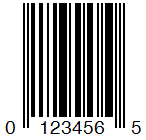
|
|
EAN-13
(European Article Number)
|
- Based on the UPC-A standard, which wasn’t designed for use in Europe
- Encodes Global Trade Item Numbers (GTIN), which uniquely identify a product for retail checkout or tracking
- Recommended for international use because EAN-13 reads both UPC and EAN barcodes
|
- Uses same 12-digit format as UPC codes, except that number system contains two digits to accommodate European country codes (which makes it 13 digits)
- Starting to be replaced by GS1 DataBar codes, which are smaller and more advanced
- Is omnidirectional (for point of sale)
|

|
|
EAN-8
|
- Is used on products with small packaging
|
- Uses the same format as EAN, except it only contains eight digits
- Not compatible with UPC-E
- Is omnidirectional (for point of sale)
|

|
|
Bookland
|
- Used exclusively with books
|
- Uses a unique numeric format that consists of:
- A number system of 978
- The book’s ISBN number, minus the last digit
|
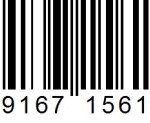
|
|
JAN
(Japanese Numbering Authority)
|
- Only used in Japan for products distributed in retail stores
|
- Uses same 12-digit format as UPC codes, except that number system only contains the digits 49
- Can be used internationally since it is compatible with UPC and EAN codes
|
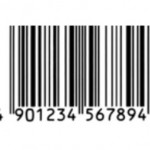
|
|
GS1 DataBar
|
- Also known as DataBar or GS1 DataBar Coupon
- Originally called RSS-14 (reduced space symbology) because it was designed for items that are too small for traditional barcodes
- Commonly used on small items in the POS, grocery, and healthcare industries
- Contains GTIN identifiers such as serial numbers, expiration date, weight, and lot number
- Also frequently used in manufacturer coupons
|
- A family of GTIN 12-, 13-, or 14-digit numeric symbols that use less space, yet hold more data, than UPC or EAN barcodes
- Only symbology approved by GS1 to encode GTIN-14 numbers in all retail checkout systems
- Symbols designed for omnidirectional scanning for retail point of sale include:
- GS1 DataBar Omnidirectional
- GS1 DataBar Stacked Omnidirectional – more compact and square, which makes them ideal for labeling small items such as produce
- GS1 DataBar Expanded
- GS1 DataBar Expanded Stacked
- Symbols designed to identify very small items using handheld scanners (mainly in the healthcare industry) include:
- GS1 DataBar Truncated
- GS1 DataBar Limited
- GS1 DataBar Stacked
|
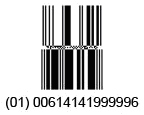
(GS1 DataBar Stacked Omnidirectional)
|
|
GS1-128
|
- Formerly known as UCC/ EAN-128
- Commonly used for shipping labels because they enable carton visibility throughout the supply chain
- Is not used for point of sale because it is not omnidirectional
|
- An up to 48-digit, alphanumeric code that consists of a:
- Code 128 start character
- Code 128 FNC1 character
- Application identifier (AI)
- Encoded data
- Symbol check character
- Stop character
|
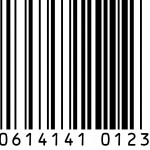
|
|
Standard 2 of 5
|
- A very simple symbology that originated in the 1960s
- Commonly used in the airline, photofinishing, and warehouse sorting industries
|
- A variable-length, numeric barcode
- Digits are encoded with five bars, two of which are always wide
|
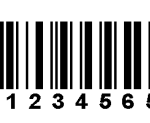
|
|
Interleaved 2 of 5 (I25)
|
- Also known as I25, which is a more efficient version of Standard 2 of 5
- Commonly used in the industrial, distribution, and warehouse industries
|
- A variable-length, numeric barcode designed for self checking
- Black bars represent the first digit and interleaved (white) spaces represent the second one
- Can use a check digit to increase data security and check for errors
|

|
|
ITF-14
|
- An enhanced Interleaved 2 of 5 symbology that is also known as the UPC Shipping Container Symbol
- Commonly used on shipping containers to mark cartons, cases, or pallets with UPC or EAN product identification numbers
|
- A 14-digit, numeric barcode that consists of a:
- Packaging indicator
- UPC numbering system or EAN prefix
- Manufacturer identification number
- Item identification number
- Check digit
|

|
|
Intelligent Mail
|
- Also known as USPS Intelligent Mail barcode (IMb), OneCode, the 4-State Customer Barcode, 4CB, and USPS4CB
- Commonly used in high-speed, automated, mail sorting machines
|
- Combines PLANET and POSTNET symbologies into a single barcode to track mailings, request address changes, and return mail
- Can only be read by a 2D barcode scanner
|

|
















